Rio de Janeiro is known worldwide for its beautiful natural setting. The contrast between its green mountains, the blue sky, the green sea, and the architectural interventions, give a unique aspect to the city not found anywhere else on the planet. No wonder in 2012, UNESCO awarded Rio de Janeiro the unprecedented title of World Heritage for its Urban Cultural Landscape (see here).
The city is completely inserted in the Atlantic Forest, one of the richest biomes in the world in terms of biodiversity.
Therefore, if you are looking for outdoor activities to do in Rio de Janeiro, here are our top 5 nature places to visit in Rio that you get you closer to mother nature.
1. Floresta da Tijuca (Tijuca Forest)
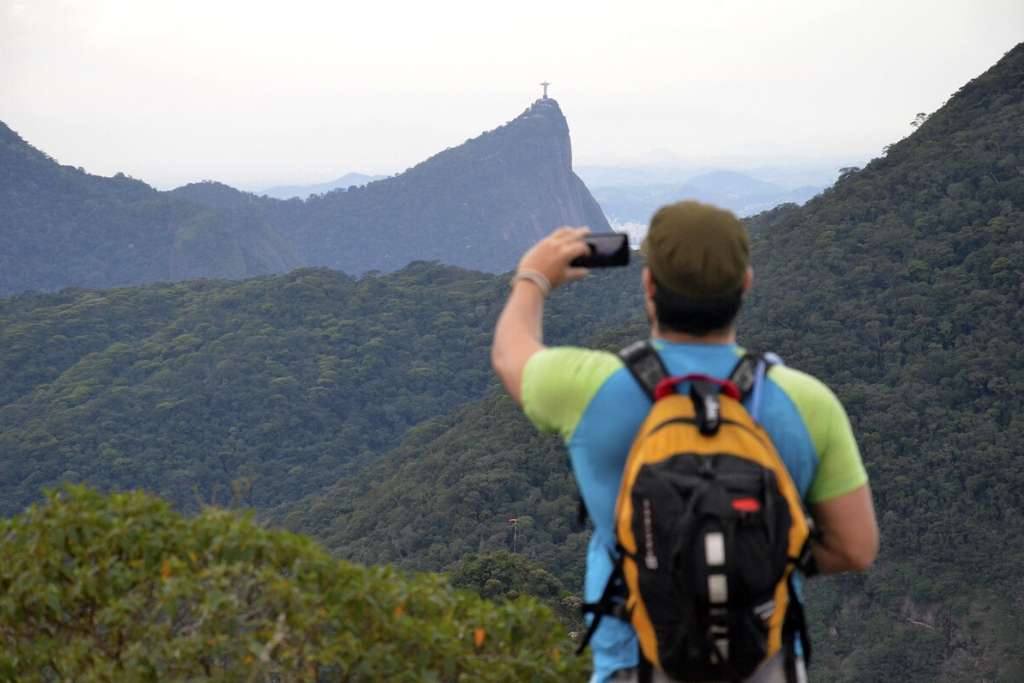
Tijuca National Park is considered one of the largest urban forests globally, with almost 4 thousand hectares of Atlantic Forest and was declared a Biosphere Reserve by Unesco in 1991.
The park protects the Tijuca Forest and has several places for hiking and waterfalls. Also, it houses viewpoints with incredible views of the city, in particular, the Mirante da Vista Chinesa (Chinese View) and Pedra Bonita, in addition to the most famous attraction in the city, Christ the Redeemer.
The forest is the result of reforestation promoted at the time of the Empire when it became clear that the deforestation caused by coffee farms was damaging the city’s supply of drinking water.
More than 230 species of animals and birds live in the park. Among them, capuchin monkey, coati, agouti, bush dog, marmoset, hummingbird, and many other species of wildlife, which you may spot while exploring its hikes and roads.
For being compartmentalized, the park can be visited by different paths. Its many roads allow you to visit it on foot, bicycle, motorcycle, car, and bus. Therefore, we recommend hiring a local guide to get to know the park, as this forest is large enough to get lost.
A more comfortable way of visiting it is to book a jeep tour or a private tour. Here are some examples:
-> Private Tour through Tijuca’s Forest
-> Tijuca Forest Jeep Tour & Pedra Bonita Hike
-> Sunrise at Mirante Dona Marta Lookout
* Tijuca Forest (Parque Nacional da Tijuca)
Address: Estrada da Cascatinha, 850 – Alto da Boa Vista (main access)
Trading hours: Daily from 8 am to 5 pm.
Tickets: Free
2. Parque Lage (Lage Park)
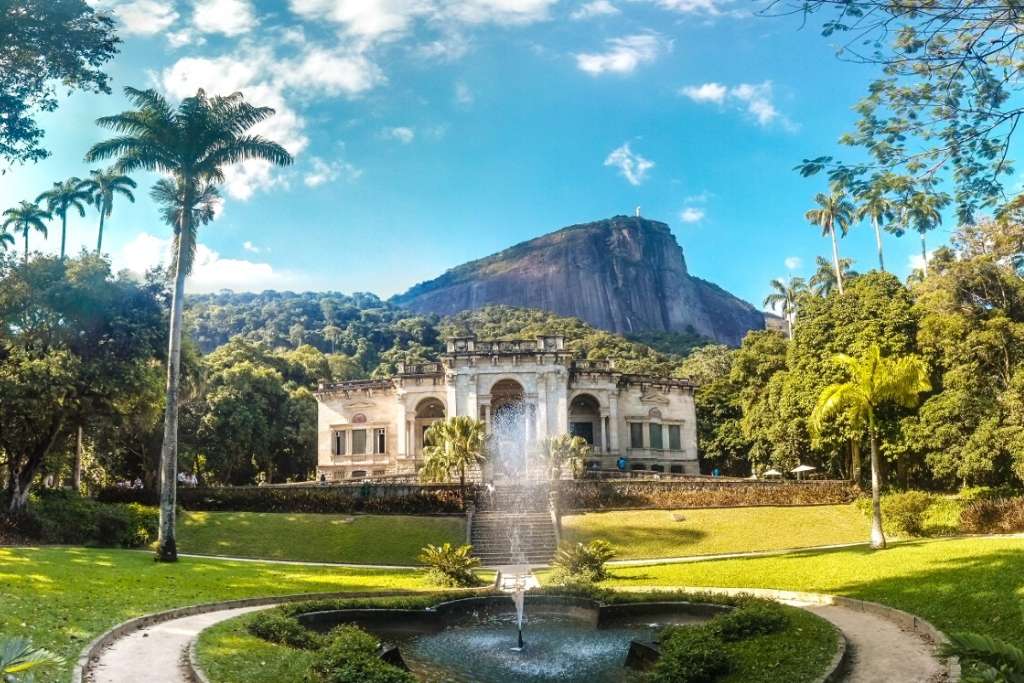
At the foot of Corcovado Mountain, Parque Lage enchants tourists with its 52 hectares of pure green, cultural, and art programs.
Its beautiful European romantic style garden, designed in 1840 by English landscaper John Tyndale, shares the attention with the native forest of the Atlantic Forest.
One of the park’s main attractions is the 19th-century mansion, where the Parque Lage School of Visual Arts (EAV) operates. The school offers free training for beginning artists, art training courses for young people, as well as an intense program of exhibitions, seminars, lectures, and video shows.
Much sought after by families, especially on weekends, Parque Lage has a good structure for children’s entertainment such as playgrounds and a large outdoor area. It is also an excellent place for picnics.
* Parque Lage (Lage Park)
Address: Rua Jardim Botânico, 414 – Jardim Botânico.
Trading Hours: Daily, from 8 am to 5 pm.
Tickets: Free
3. Jardim Botânico (Botanic Garden)
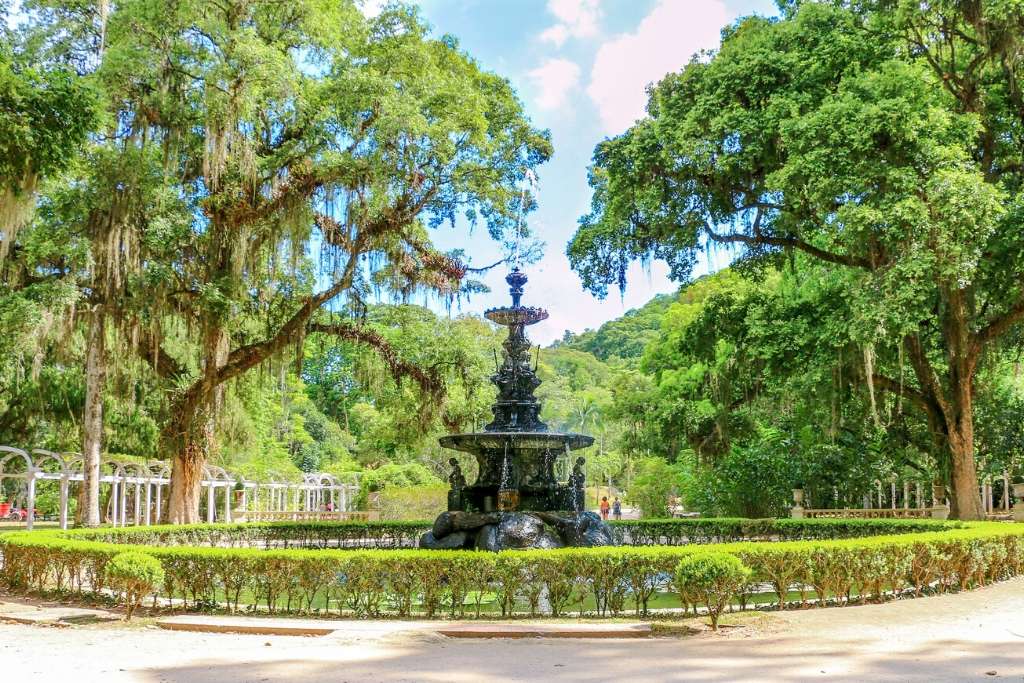

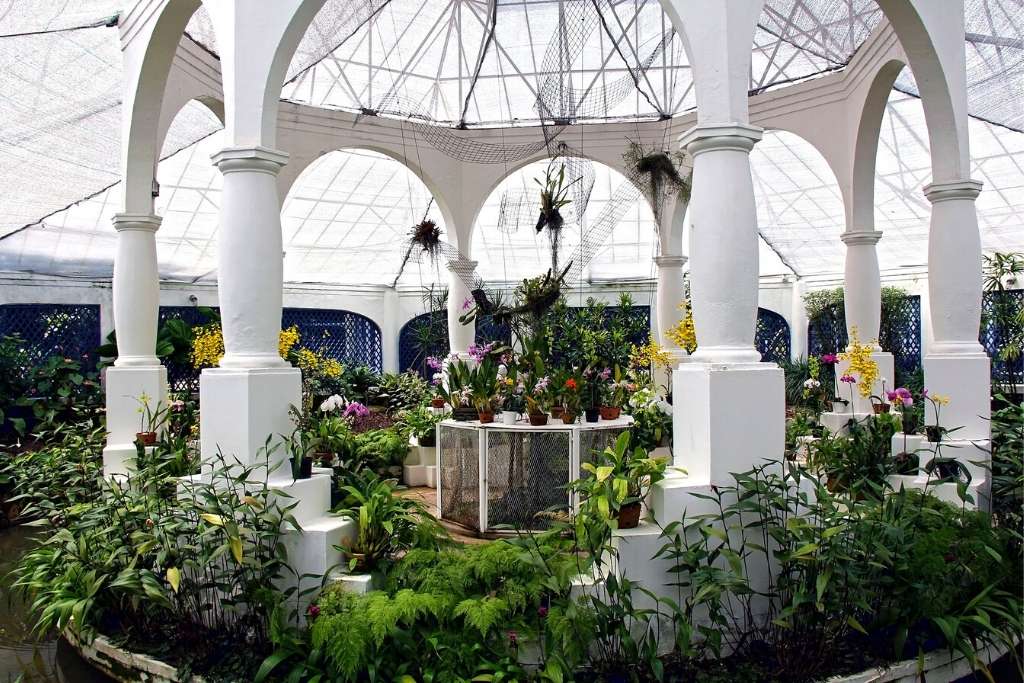
Located on the same road (less than 1km away) is the Botanical Garden of Rio de Janeiro, considered one of the richest and most important Botanical Gardens in the world.
Founded in 1808 by king Dom João VI, the Botanical Garden is a famous tourist spot in the city and widely visited by researchers who study the hundreds of species that inhabit it.
The garden, which is a UNESCO biosphere reserve, has a total area of 137 hectares, 54 of which are cultivated. It contains more than 8,000 species of plant life (including rare collections of bromeliads and orchids), century-old trees, and many species of the Brazilian fauna and Flora.
The highlights are the Orchidarium, an iron-and-glass greenhouse built in the 1930s filled with more than 2,000 species of orchids, and the Japanese Gardens with their cherry trees, wooden bridges, koi ponds, and Bonsai.
You can also walk down the half-mile long Avenue of Royal Palms, a pathway lined with 134 palm trees leading into the gardens or ride through on an electric cart tour.
It is also an excellent place for kids. They can look out for small monkeys lurching in the trees and visit the Sensory Garden, with aromatic plants and herbs, signed in Braille.
-> Also read: 5 tours to enjoy Rio de Janeiro with children
* Jardim Botânico (Botanic Garden)
Address: R. Jardim Botânico,1008 – Jardim Botânico – CEP 22460-000
Trading hours: Mondays – 12 to 6 pm. Tuesday to Sunday – 8 am to 6 pm.
Tickets: R$ 15,00
4. Parque do Penhasco Dois Irmãos (Two Brothers Cliff Natural Park)


The Municipal Natural Park Penhasco Dois Irmãos is an environmental preservation area with almost 40 hectares in Leblon, south zone of the city.
The park is easy to access and a great place for those who want to admire the combination of nature and the shoreline of the Marvelous City. From one of its four viewpoints, you can observe some of the most important postcards of the city: Lagoa Rodrigo de Freitas, Jardim Botânico, Corcovado, and the beaches of Leblon and Ipanema.
-> Read also: 6 free and easy to access lookouts in Rio de Janeiro
In the park, it is possible to observe botanical species such as the quarry orchid, the stone anthurium, the white velvet, and the bromeliads. As well as animals such as star tamarins, squirrels and several species of birds. The presence of the blue butterfly is also frequently observed. In the small lake of the park, beautiful water lilies give a special touch to the environment.
* Parque do Penhasco Dois Irmãos (Two Brothers Cliff Natural Park)
Address: Rua Aperana, – Leblon – Rio de Janeiro – RJ
Trading hours: Tuesday to Sunday, from 8 am to 5 pm.
Tickets: Free.
5. Sítio Roberto Burle Marx (Roberto Burle Marx Garden)
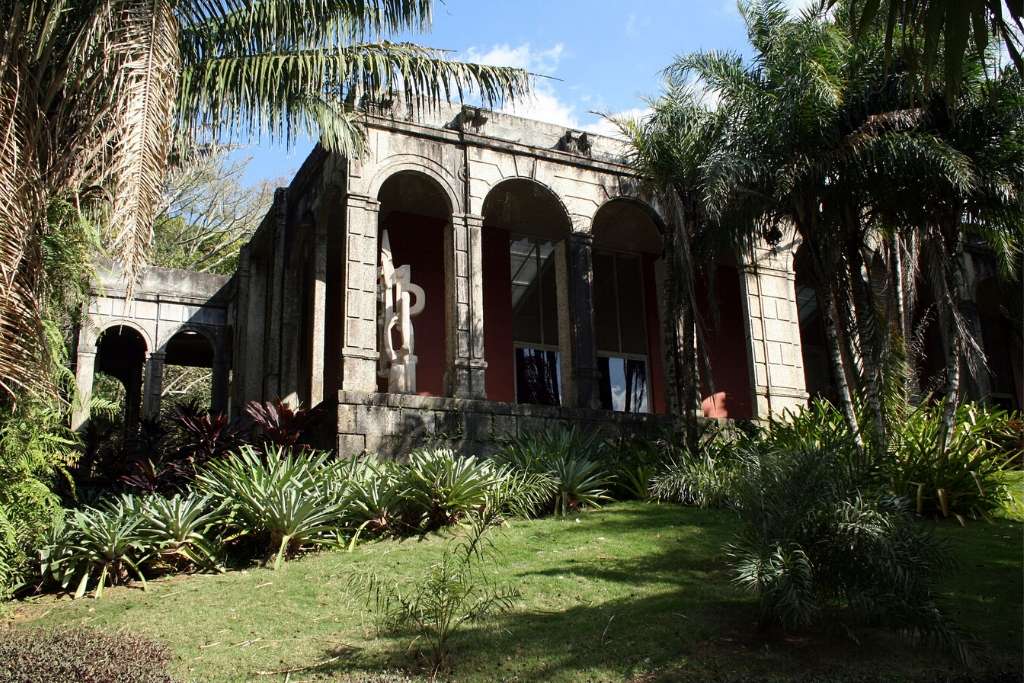
Former residence of the Brazilian landscape architect Burle Marx, Sítio Roberto Burle Marx (SRBM) is a center for Landscape, Botany, and Nature Conservation Studies inserted in a region of native vegetation of the Maciço da Pedra Branca, west zone of the city.
The site has more than 400 thousand m², with one of the most important collections of tropical and semi-tropical plants in the world. The collection has more than 3,500 species and started when Roberto Burle Marx was only six years old.
The property was transformed into a Museum-House after his death and nowadays displays art and handicrafts acquired by Burle Marx throughout his life. The collection of the house has more than 3 thousand items, including works by Roberto himself, who, in addition to being a landscape artist, was also a painter, draftsman, designer, sculptor, and singer.
* Sítio Roberto Burle Marx (Roberto Burle Marx Garden)
Address: Estrada Roberto Burle Marx, 2019
Trading hours: only by appointment – Tuesday to Saturday, 9:30 am and 1:30 pm
Tickets: R$ 10,00 per person
From the mountains to the beaches, there are many nature places to visit in Rio. Check out our local experiences and explore Rio de Janeiro like a local.
If you need assistance in planning your visit or would like to have a customized itinerary for your trip, get in contact with us!
Our local experts can help you make your trip to Rio de Janeiro unforgettable!

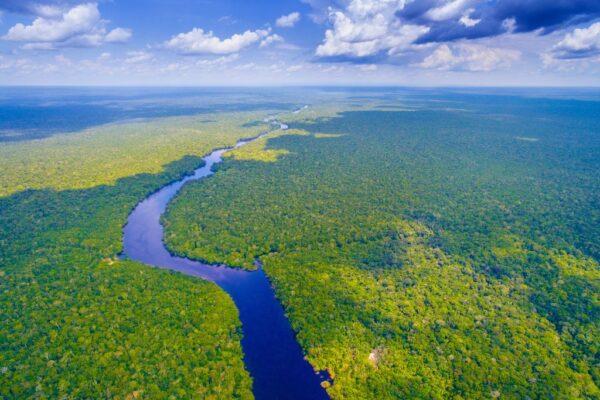
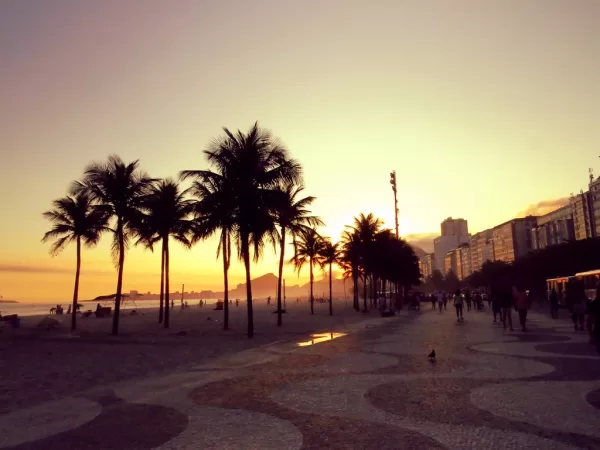
Pingback: Roteiro Gastronômico: Somebody Feed Phil